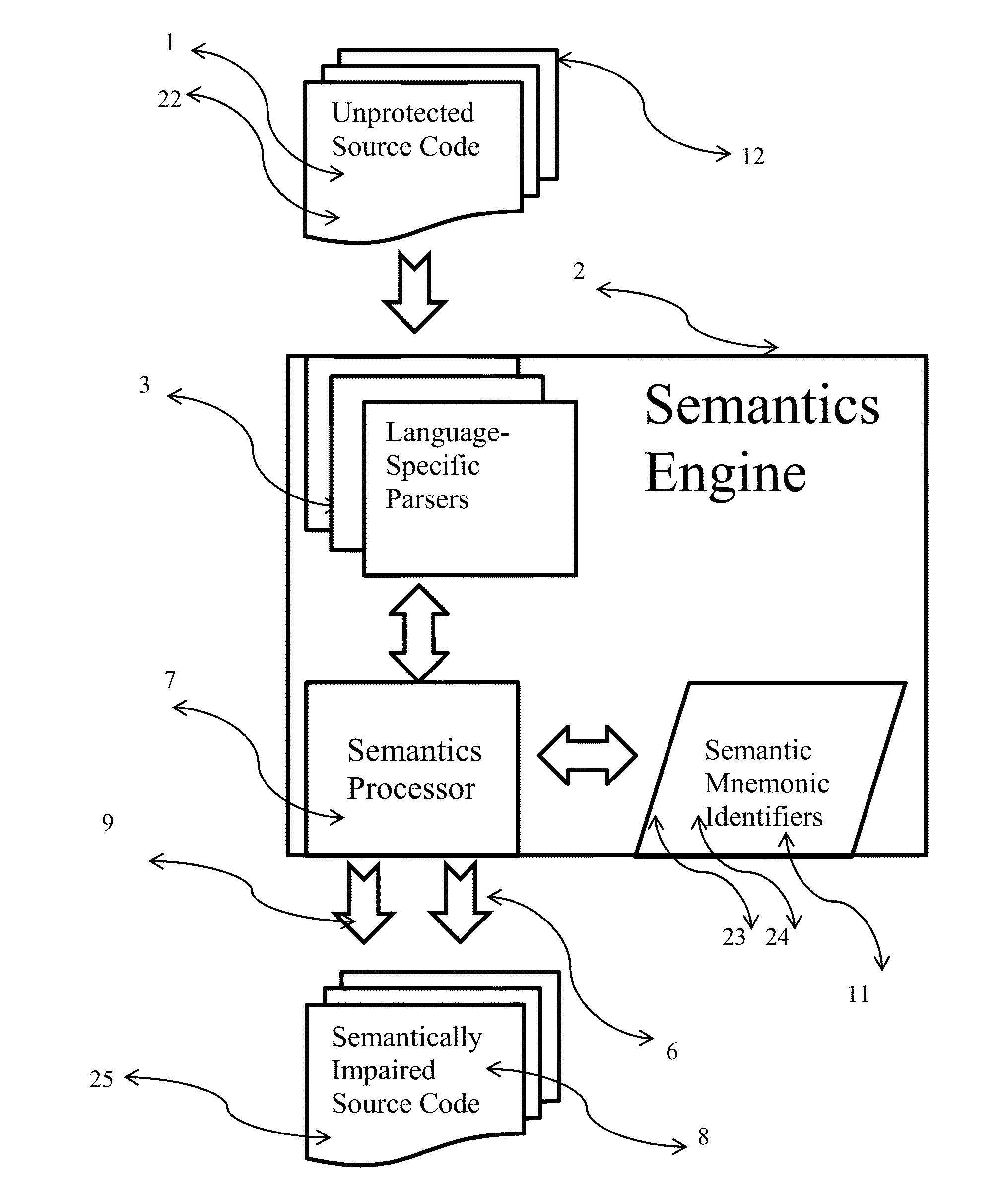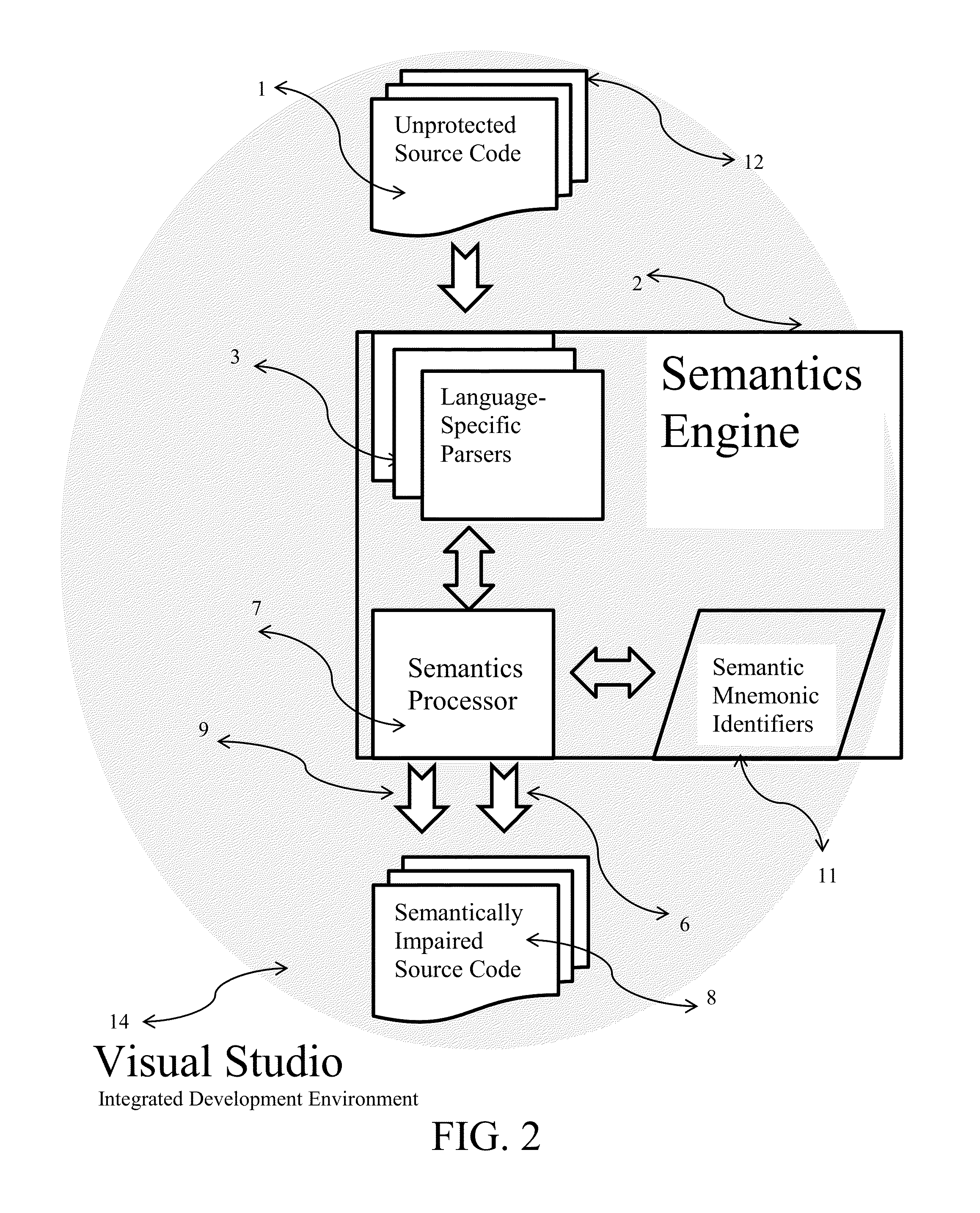Method for determining and protecting proprietary source code using mnemonic identifiers
a source code and mnemonic technology, applied in the field of determining and protecting proprietary source code using mnemonic identifiers, can solve the problems of source code theft, object or assembly scramblers are vulnerable, and techniques that do not address the more important problem of source code th
- Summary
- Abstract
- Description
- Claims
- Application Information
AI Technical Summary
Benefits of technology
Problems solved by technology
Method used
Image
Examples
Embodiment Construction
[0035]A preferred embodiment of the present invention is shown as a stand-alone utility in FIG. 1 that is independent of any particular development environment. The semantics engine 2 operates on unprotected source code 1 thereby producing semantically-impaired source code 8. The semantics engine 2 works for any operating environment, present or future, including but not limited to the Windows operating systems, the Linux operating systems, the Unix operating systems, the MAC operating system, the IOS operating system and the Android operating system.
[0036]The list 11 of semantic mnemonic identifiers are determined for the unprotected source code 1 by parsing each source code file 12 of the unprotected source code 1 using a language-specific parser 3 to determine the mnemonic identifiers 22. Each mnemonic identifier 22 is further determined to be a defining mnemonic identifier 23 or a referencing mnemonic identifier 24. The defining mnemonic identifiers 23 and all matching referenci...
PUM
 Login to View More
Login to View More Abstract
Description
Claims
Application Information
 Login to View More
Login to View More - R&D
- Intellectual Property
- Life Sciences
- Materials
- Tech Scout
- Unparalleled Data Quality
- Higher Quality Content
- 60% Fewer Hallucinations
Browse by: Latest US Patents, China's latest patents, Technical Efficacy Thesaurus, Application Domain, Technology Topic, Popular Technical Reports.
© 2025 PatSnap. All rights reserved.Legal|Privacy policy|Modern Slavery Act Transparency Statement|Sitemap|About US| Contact US: help@patsnap.com



